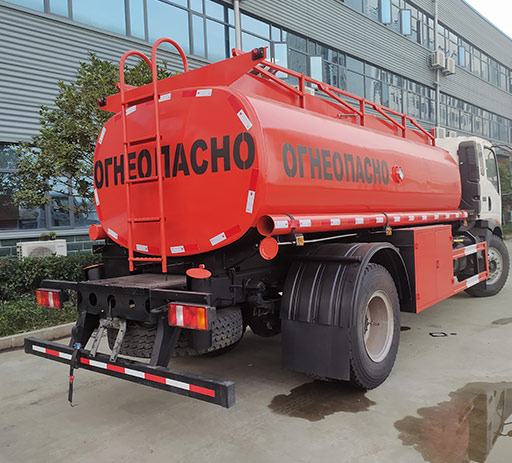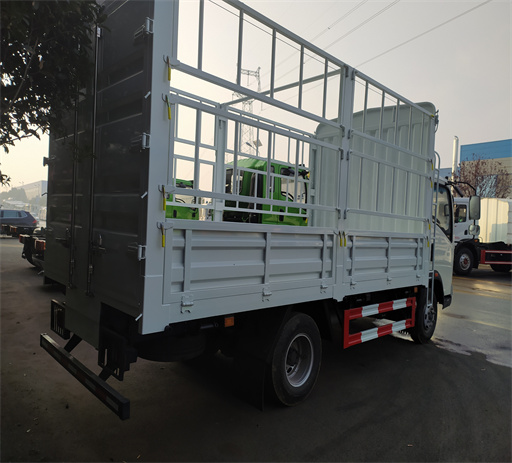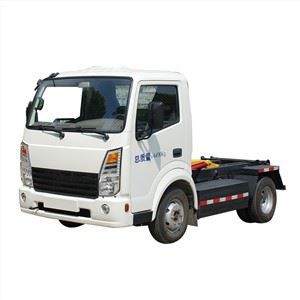Mastering the Street Broom Sweeper: Your Comprehensive Guide
Introduction
The street broom sweeper is an essential tool in urban maintenance, playing a critical role in keeping our streets, sidewalks, and public spaces clean. With increasing concerns about environmental pollution and public health, the importance of an effective cleaning mechanism cannot be overstated. This article will delve into the various aspects of street broom sweepers, from their types and components to practical tips for effective operation and maintenance. Whether you are a municipal worker, a business owner, or simply interested in how cities maintain cleanliness, this guide is for you.

Understanding Street Broom Sweepers
What is a Street Broom Sweeper?
A street broom sweeper is a machine designed for cleaning streets and public areas. It typically features rotating brushes that lift dirt, debris, and litter from the ground, which are then collected into a hopper for disposal. These machines are essential for maintaining urban cleanliness and aesthetics.
Types of Street Broom Sweepers
Street broom sweepers come in various types to suit different cleaning needs. The main categories include:
- Ride-On Sweepers: Ideal for large areas, these machines allow the operator to sit while sweeping.
- Walk-Behind Sweepers: Suitable for small spaces; they require the operator to walk behind the machine.
- Towed Sweepers: Designed to be attached to a vehicle, these sweepers are useful for sweeping parking lots and wide roads.
- Parking Lot Sweepers: Tailored for cleaning parking areas, combining compact size with high efficiency.
Components of a Street Broom Sweeper
Brush System
The brush system is the heart of a street broom sweeper. It can consist of multiple rotating brushes that work together to dislodge debris. Different brush materials can be used, including:
- Polypropylene: Durable and resistant to wear, suitable for various surfaces.
- Metal Brushes: Effective for tough debris but may scratch sensitive surfaces.
- Soft Bristle Brushes: Ideal for delicate surfaces such as sidewalks and roads.
Vacuum System
The vacuum system collects the debris and prevents it from being blown away by the wind. It ensures efficient operation by keeping the collected debris contained until disposal.
Water System
Many street broom sweepers come with a water system to suppress dust. This feature is crucial for urban areas where air quality is a concern. Regular watering helps maintain visibility and prevents respiratory problems among residents.
Hopper
The hopper is where the collected debris is stored. The size of the hopper varies among different models and influences how frequently the sweeper needs to be emptied during operation. An optimal hopper size will reduce downtime and increase efficiency.
Benefits of Using a Street Broom Sweeper
Enhanced Cleaning Efficiency
Street broom sweepers can clean extensive areas more efficiently than manual sweeping methods. They can swiftly handle vast expanses in urban areas.
Cost-Effectiveness
Although the initial investment in a street broom sweeper may be high, the long-term savings in labor and waste management often outweigh the costs. These machines require fewer workers and less time to clean effectively
Environmental Benefits
Using street broom sweepers helps reduce litter and promotes a cleaner environment. This, in turn, contributes to better public health and reduced pollution levels.
Versatility
Street broom sweepers are versatile machines that can be used in various environments, including streets, parking lots, sidewalks, and more. They can adapt to different cleaning tasks with the right attachments and settings.
Choosing the Right Street Broom Sweeper
Assessing Your Needs
Before purchasing or renting a street broom sweeper, evaluate the specific cleaning requirements of your area. Considerations include:
- Area Size: Larger areas may require ride-on sweepers, while smaller locations are suitable for walk-behind models.
- Terrain: The condition of the surfaces you need to clean will influence your choice of brush type and machine specifications.
- Budget: Determine a budget that includes initial purchase or rental and ongoing maintenance costs.
- Regular Cleaning Schedule: Assess how often you will be using the machine to select one with the right hopper capacity and durability.
Key Features to Look For
Some key features to consider when selecting a street broom sweeper include:
| Feature | Description |
|---|---|
| Fuel Type | Gasoline, diesel, or electric options can be considered based on your environmental impact goals. |
| Brush Control | Look for machines with adjustable brush pressure settings to adapt to various surfaces. |
| Size and Weight | Ensure the sweeper can navigate the areas you need to clean without issue. |
| Maintenance Ease | Choose models with easy-access components for quick maintenance and repairs. |
Best Practices for Operating a Street Broom Sweeper
Pre-Operation Checks
Before using a street broom sweeper, carry out the following checks:
- Inspect the brushes for wear and tear.
- Ensure the hopper is empty and clean.
- Check fluid levels (fuel, oil, water).
- Examine the vacuum system for blockages.
Efficient Sweeping Techniques
To optimize your street sweeping efficiency:
- Begin from the edges or corners of the area and work your way inward.
- Use a systematic pattern to ensure complete coverage.
- Adjust your speed according to the surface type and debris amount.
Post-Operation Maintenance

After operating the sweeper, ensure proper maintenance:
- Clean the brushes to prevent buildup.
- Empty the hopper promptly to avoid overloading.
- Store the machine in a dry, sheltered place to protect it from the elements.
Common Problems and Solutions
Brush Wear
Brushes may wear out quickly in tough environments. Regularly inspect and replace brushes as needed to maintain performance.
Vacuum Issues
Blockages in the vacuum system can reduce efficiency. Clear any debris and check filters regularly to prevent clogs.
Water System Malfunctions
Ensure the water system functions correctly to prevent dust. Check hoses for leaks and refill water as necessary.
Eco-Friendly Practices with Street Broom Sweepers
Water Conservation Techniques
Implement strategies for reducing water usage while maintaining cleaning efficiency:
- Monitor water levels and adjust spray settings accordingly.
- Use eco-friendly treatments that bind dust without excessive water.
Debris Disposal Methods

Develop a plan for responsible waste disposal that includes recycling materials when possible. This can significantly reduce landfill waste.
Case Studies: Successful Street Sweeping Initiatives
City A: An Urban Cleanup Success
In City A, the deployment of street broom sweepers led to a marked improvement in cleanliness and a decrease in complaints about litter. The city invested in ride-on models to cover large areas efficiently, adopting a sweeping schedule that optimized usage.
District B: Eco-Friendly Transition
District B transitioned to electric street sweeper models, which not only reduced noise pollution but also cut greenhouse gas emissions significantly. The initiative attracted positive community feedback and promoted an environmentally conscious image.
FAQ
What is the average lifespan of a street broom sweeper?
The average lifespan varies but can range from 5 to 10 years with proper maintenance.
Can I rent a street broom sweeper?
Yes, many equipment rental companies offer street broom sweepers for short- or long-term rentals.
How often should I maintain my street broom sweeper?
Regular maintenance should be done after every use, with more in-depth checks at scheduled intervals determined by the manufacturer’s guidance.
Are street broom sweepers suitable for residential areas?
Yes, they can effectively clean residential streets, sidewalks, and driveways when operated responsibly.
What common debris can street broom sweepers collect?
Street broom sweepers can collect litter, leaves, dirt, gravel, and even small branches, depending on the model and attachments used.
How do street broom sweepers impact public health?
By maintaining clean streets, street broom sweepers help reduce the presence of allergens, pests, and pollutants, contributing to better public health outcomes.
